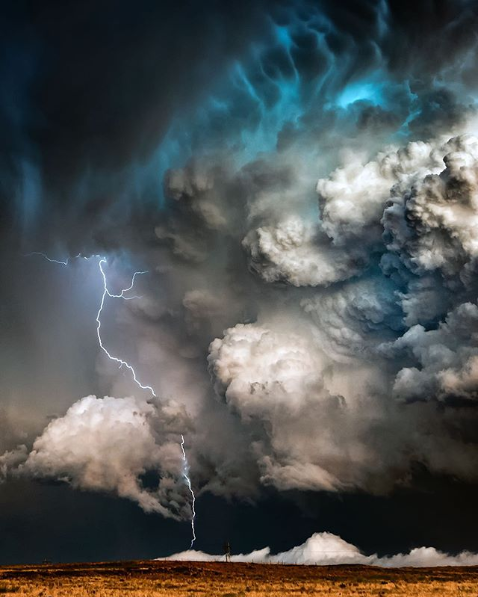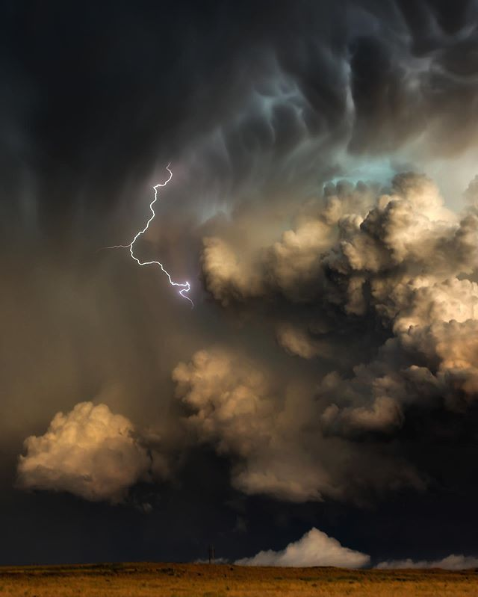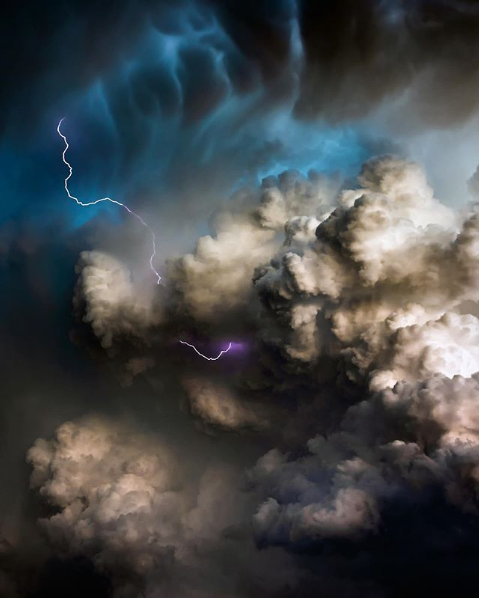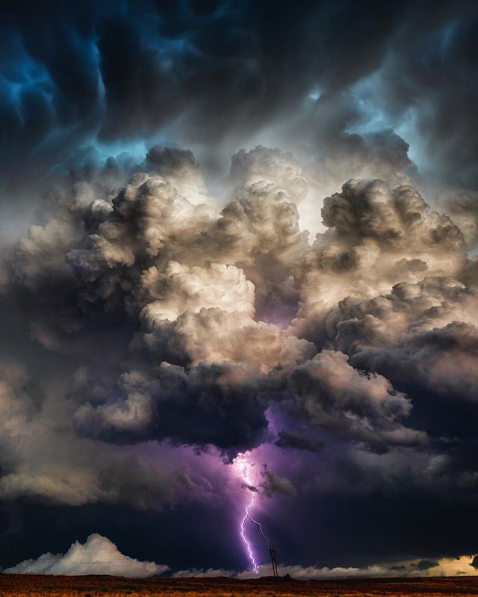☽☆☼Celestial Bodies☼☆☾

☽☆☼Celestial Bodies☼☆☾
More Posts from Sidusglacies and Others

Weird Magnetic Behavior in Space
In between the planets, stars and other bits of rock and dust, space seems pretty much empty. But the super-spread out matter that is there follows a different set of rules than what we know here on Earth.
For the most part, what we think of as empty space is filled with plasma. Plasma is ionized gas, where electrons have split off from positive ions, creating a sea of charged particles. In most of space, this plasma is so thin and spread out that space is still about a thousand times emptier than the vacuums we can create on Earth. Even still, plasma is often the only thing out there in vast swaths of space — and its unique characteristics mean that it interacts with electric and magnetic fields in complicated ways that we are just beginning to understand.

Five years ago, we launched a quartet of satellites to study one of the most important yet most elusive behaviors of that material in space — a kind of magnetic explosion that had never before been adequately studied up close, called magnetic reconnection. Here are five of the ways the Magnetospheric Multiscale mission (MMS) has helped us study this intriguing magnetic phenomenon.
1. Seeing magnetic explosions up close
Magnetic reconnection is the explosive snapping and forging of magnetic fields, a process that can only happen in plasmas — and it’s at the heart of space weather storms that manifest around Earth.
When the Sun launches clouds of solar material — which is also made of plasma — toward Earth, the magnetic field embedded within the material collides with Earth’s huge global magnetic field. This sets off magnetic reconnection that injects energy into near-Earth space, triggering a host of effects — induced electric currents that can harm power grids, to changes in the upper atmosphere that can affect satellites, to rains of particles into the atmosphere that can cause the glow of the aurora.

Though scientists had theorized about magnetic reconnection for decades, we’d never had a chance to study it on the small scales at which it occurs. Determining how magnetic reconnection works was one of the key jobs MMS was tasked with — and the mission quickly delivered. Using instruments that measured 100 times faster than previous missions, the MMS observations quickly determined which of several 50-year-old theories about magnetic reconnection were correct. It also showed how the physics of electrons dominates the process — a subject of debate before the launch.
2. Finding explosions in surprising new places
In the five years after launch, MMS made over a thousand trips around Earth, passing through countless magnetic reconnection events. It saw magnetic reconnection where scientists first expected it: at the nose of Earth’s magnetic field, and far behind Earth, away from the Sun. But it also found this process in some unexpected places — including a region thought to be too tumultuous for magnetic reconnection to happen.
As solar material speeds away from the Sun in a flow called the solar wind, it piles up as it encounters Earth’s magnetic field, creating a turbulent region called the magnetosheath. Scientists had only seen magnetic reconnection happening in relatively calm regions of space, and they weren’t sure if this process could even happen in such a chaotic place. But MMS’ precise measurements revealed that magnetic reconnection happens even in the magnetosheath.

MMS also spotted magnetic reconnection happening in giant magnetic tubes, leftover from earlier magnetic explosions, and in plasma vortices shaped like ocean waves — based on the mission’s observations, it seems magnetic reconnection is virtually ubiquitous in any place where opposing magnetic fields in a plasma meet.
3. How energy is transferred
Magnetic reconnection is one of the major ways that energy is transferred in plasma throughout the universe — and the MMS mission discovered that tiny electrons hold the key to this process.
Electrons in a strong magnetic field usually exhibit a simple behavior: They spin tight spirals along the magnetic field. In a weaker field region, where the direction of the magnetic field reverses, the electrons go freestyle — bouncing and wagging back and forth in a type of movement called Speiser motion.

Flying just 4.5 miles apart, the MMS spacecraft measured what happens in a magnetic field with intermediate strength: These electrons dance a hybrid, meandering motion — spiraling and bouncing about before being ejected from the region. This takes away some of the magnetic field’s energy.
4. Surpassing computer simulations
Before we had direct measurements from the MMS mission, computer simulations were the best tool scientists had to study plasma’s unusual magnetic behavior in space. But MMS’ data has revealed that these processes are even more surprising than we thought — showing us new electron-scale physics that computer simulations are still trying to catch up with. Having such detailed data has spurred theoretical physicists to rethink their models and understand the specific mechanisms behind magnetic reconnection in unexpected ways.

5. In deep space & nuclear reactions
Although MMS studies plasma near Earth, what we learn helps us understand plasma everywhere. In space, magnetic reconnection happens in explosions on the Sun, in supernovas, and near black holes.
These magnetic explosions also happen on Earth, but only under the most extreme circumstances: for example, in nuclear fusion experiments. MMS’ measurements of plasma’s behavior are helping scientists better understand and potentially control magnetic reconnection, which may lead to improved nuclear fusion techniques to generate energy more efficiently.

This quartet of spacecraft was originally designed for a two-year mission, and they still have plenty of fuel left — meaning we have the chance to keep uncovering new facets of plasma’s intriguing behavior for years to come. Keep up with the latest on the mission at nasa.gov/mms.
Make sure to follow us on Tumblr for your regular dose of space: http://nasa.tumblr.com




photography by Adam Kyle Jackson powerful nature



In order top to bottom this celestial snapshot features Comet ISON, planet Mars, and Regulus, alpha star of the constellation Leo, in the same frame.
Image Credit: Pete Lawrence (Digital-Astronomy)

the truth is out there









𝖒𝖔𝖔𝖓𝖘 𝖎

















Space Age landscapes by planetary scientist William K. Hartmann.
-
 emolyxo liked this · 2 months ago
emolyxo liked this · 2 months ago -
 1942pndr liked this · 3 months ago
1942pndr liked this · 3 months ago -
 honeyedbrie reblogged this · 3 months ago
honeyedbrie reblogged this · 3 months ago -
 honeyedbrie liked this · 3 months ago
honeyedbrie liked this · 3 months ago -
 earthensiren reblogged this · 5 months ago
earthensiren reblogged this · 5 months ago -
 whisteriaremembers liked this · 5 months ago
whisteriaremembers liked this · 5 months ago -
 whisteriaremembers reblogged this · 5 months ago
whisteriaremembers reblogged this · 5 months ago -
 uh-stray-lee-ah reblogged this · 5 months ago
uh-stray-lee-ah reblogged this · 5 months ago -
 destinedbooklover liked this · 5 months ago
destinedbooklover liked this · 5 months ago -
 yeawnzjun liked this · 5 months ago
yeawnzjun liked this · 5 months ago -
 words-to-accomplish-something liked this · 5 months ago
words-to-accomplish-something liked this · 5 months ago -
 destinyswoes liked this · 5 months ago
destinyswoes liked this · 5 months ago -
 aorilegustalasopa liked this · 5 months ago
aorilegustalasopa liked this · 5 months ago -
 lovelybarnes liked this · 5 months ago
lovelybarnes liked this · 5 months ago -
 t-lostinworlds reblogged this · 5 months ago
t-lostinworlds reblogged this · 5 months ago -
 t-lostinworlds liked this · 5 months ago
t-lostinworlds liked this · 5 months ago -
 softmenace reblogged this · 5 months ago
softmenace reblogged this · 5 months ago -
 noellez-best-life23 reblogged this · 5 months ago
noellez-best-life23 reblogged this · 5 months ago -
 noellez-best-life23 liked this · 5 months ago
noellez-best-life23 liked this · 5 months ago -
 moonchildsthoughts reblogged this · 5 months ago
moonchildsthoughts reblogged this · 5 months ago -
 footst3ps reblogged this · 5 months ago
footst3ps reblogged this · 5 months ago -
 yeahhhyouuuknoww liked this · 5 months ago
yeahhhyouuuknoww liked this · 5 months ago -
 blutsucht reblogged this · 7 months ago
blutsucht reblogged this · 7 months ago -
 bitemcrks reblogged this · 7 months ago
bitemcrks reblogged this · 7 months ago -
 shharing liked this · 7 months ago
shharing liked this · 7 months ago -
 astraeasstars liked this · 7 months ago
astraeasstars liked this · 7 months ago -
 endlesslyanya reblogged this · 7 months ago
endlesslyanya reblogged this · 7 months ago -
 melo-cupcake-love reblogged this · 8 months ago
melo-cupcake-love reblogged this · 8 months ago -
 sweetdevil300 liked this · 9 months ago
sweetdevil300 liked this · 9 months ago -
 melo-cupcake-love liked this · 10 months ago
melo-cupcake-love liked this · 10 months ago -
 justwatchmyeyes liked this · 11 months ago
justwatchmyeyes liked this · 11 months ago -
 mystiicmmagic reblogged this · 1 year ago
mystiicmmagic reblogged this · 1 year ago -
 lavender-moongoddess reblogged this · 1 year ago
lavender-moongoddess reblogged this · 1 year ago -
 justasleepybooklover reblogged this · 1 year ago
justasleepybooklover reblogged this · 1 year ago -
 moondust-maedae reblogged this · 1 year ago
moondust-maedae reblogged this · 1 year ago -
 moondust-maedae liked this · 1 year ago
moondust-maedae liked this · 1 year ago -
 pinkautist reblogged this · 1 year ago
pinkautist reblogged this · 1 year ago -
 caitas-cooing reblogged this · 1 year ago
caitas-cooing reblogged this · 1 year ago -
 caitas-cooing liked this · 1 year ago
caitas-cooing liked this · 1 year ago -
 akirathief reblogged this · 1 year ago
akirathief reblogged this · 1 year ago -
 grimmkiitty reblogged this · 1 year ago
grimmkiitty reblogged this · 1 year ago -
 avimuses reblogged this · 1 year ago
avimuses reblogged this · 1 year ago -
 ochazos liked this · 1 year ago
ochazos liked this · 1 year ago








